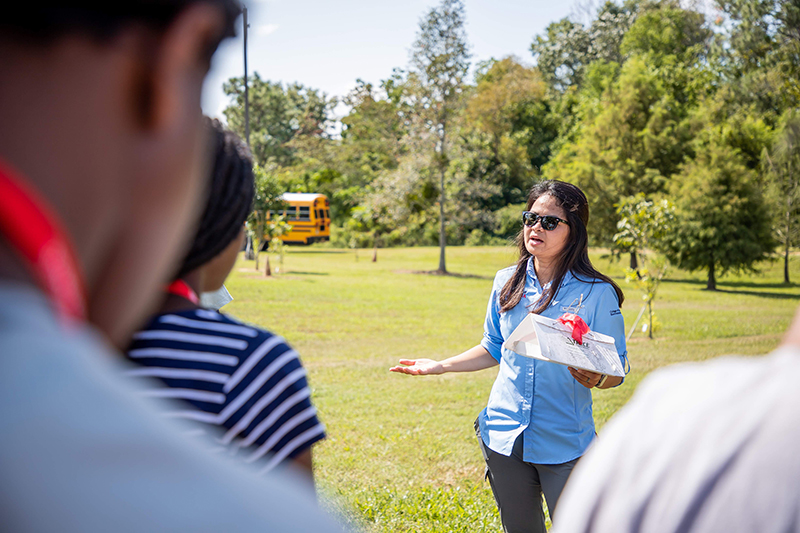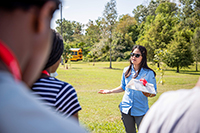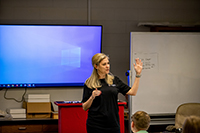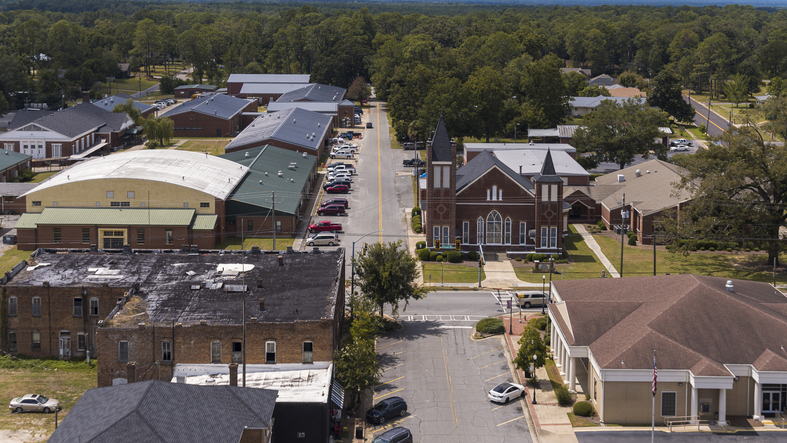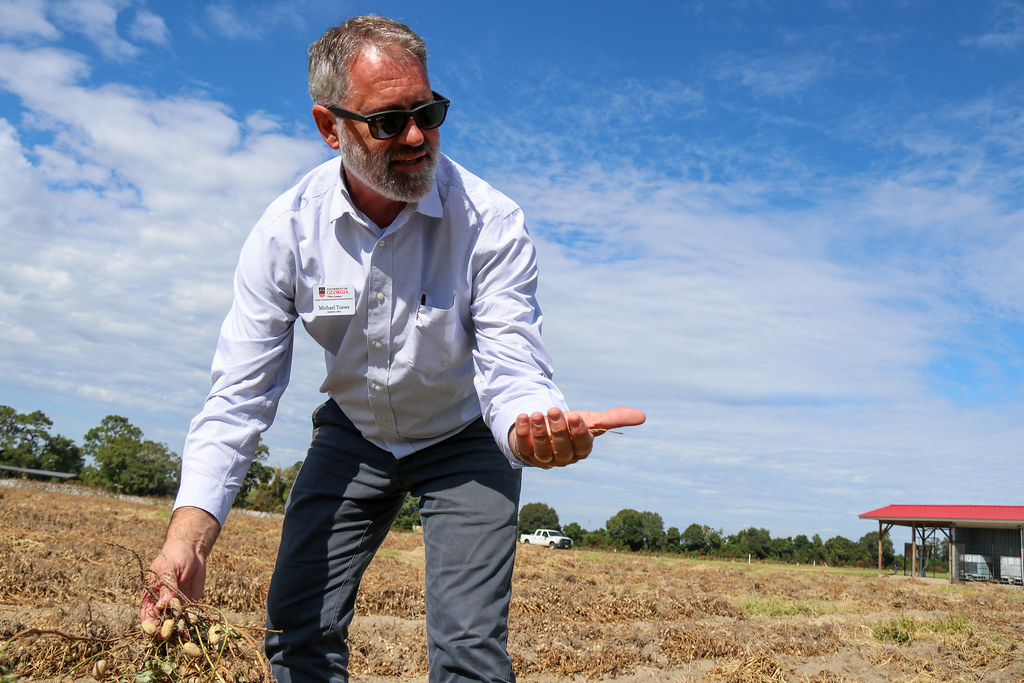The University of Georgia Tifton campus hosted STEM in AGtion, an event that allowed 90 high-achieving students to learn about STEM-based careers in agriculture on Sept. 11.
STEM, which stands for science, technology, engineering and mathematics, has been a major push in high schools across the country in recent years, according to Katie Murray, admissions counselor at UGA-Tifton.
The event was designed to introduce students to a variety of STEM-related job opportunities available in agriculture.
“Agriculture is the state’s largest industry, but people often will hear the word and assume it means being a farmer and say, ‘That’s not me,’” said Murray. “Creating an event that caters to students’ interests outside of production agriculture exposes them to careers in agriculture that they may have never considered.”
The half-day event included six UGA-Tifton research scientists conducting labs in the fields of entomology, precision agriculture, peanut physiology, crop development, soils and turfgrass.
Angelita Acebes-Doria, UGA Cooperative Extension pecan entomologist, conducted the entomology lab.
“With this experiment, we wanted to be able to promote, or at least showcase, the science of entomology and explain how we study insects and why it is important,” said Acebes-Doria.
Entomology combines both biological and environmental sciences, as insects are one of the most biologically diverse species and thrive in many different habitats.
“Due to the diversity of their biology as well as their behavior, we wanted to be able to show that, when you want to study these organisms, you have to know what kind of tools to use in certain conditions and environments,” said Acebes-Doria.
Students captured insects using materials such as sticky traps with different colors, allowing students to learn which insects are attracted to which color. The students also learned about the insects they trapped and whether or not they were harmful to local plants.
John Snider, UGA associate professor of crop physiology, led a lab to teach students about crop development.
“Our goal was to walk the students through the growth and development of the crop from seed to seed, from the time the seed goes into the soil to the time it’s mature,” said Snider, who demonstrated how plant biology and the genetic differences in seeds help scientists make decisions in precision agriculture.
“We’re covering basic biology, but every stage of crop development has specific needs and we want to drive home the point that different stages have different needs,” Snider said.
Students used a portable cotton gin to separate cotton seeds from fiber, and after a little bit of math to wrap things up, students demonstrated how seed production and productivity go hand-in-hand.
Larry Baldree, a research coordinator for UGA-Tifton’s turfgrass team, led a turfgrass lab for students. The students toured the greenhouses and observed field and evaluation trials, observing how turfgrass is grown through breeding and plant production. Students also learned about new turfgrass technology including automatic mowers, new methods of digital analysis evaluations, and drones used for data collection.
“Our overall objective was to give them a brief glimpse of what it takes to go from seed to a released cultivar,” Baldree said. “I hope we demonstrated all the ways that science and math are involved in new cultivar production and that turfgrass research is way more fascinating than just watering and mowing grass.”
For more information about STEM in AGtion and other upcoming events sponsored by UGA-Tifton, visit www.tifton.caes.uga.edu.

